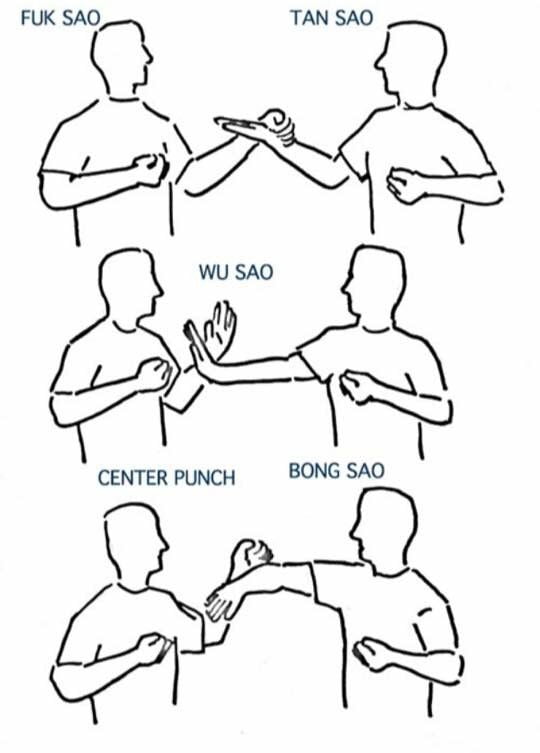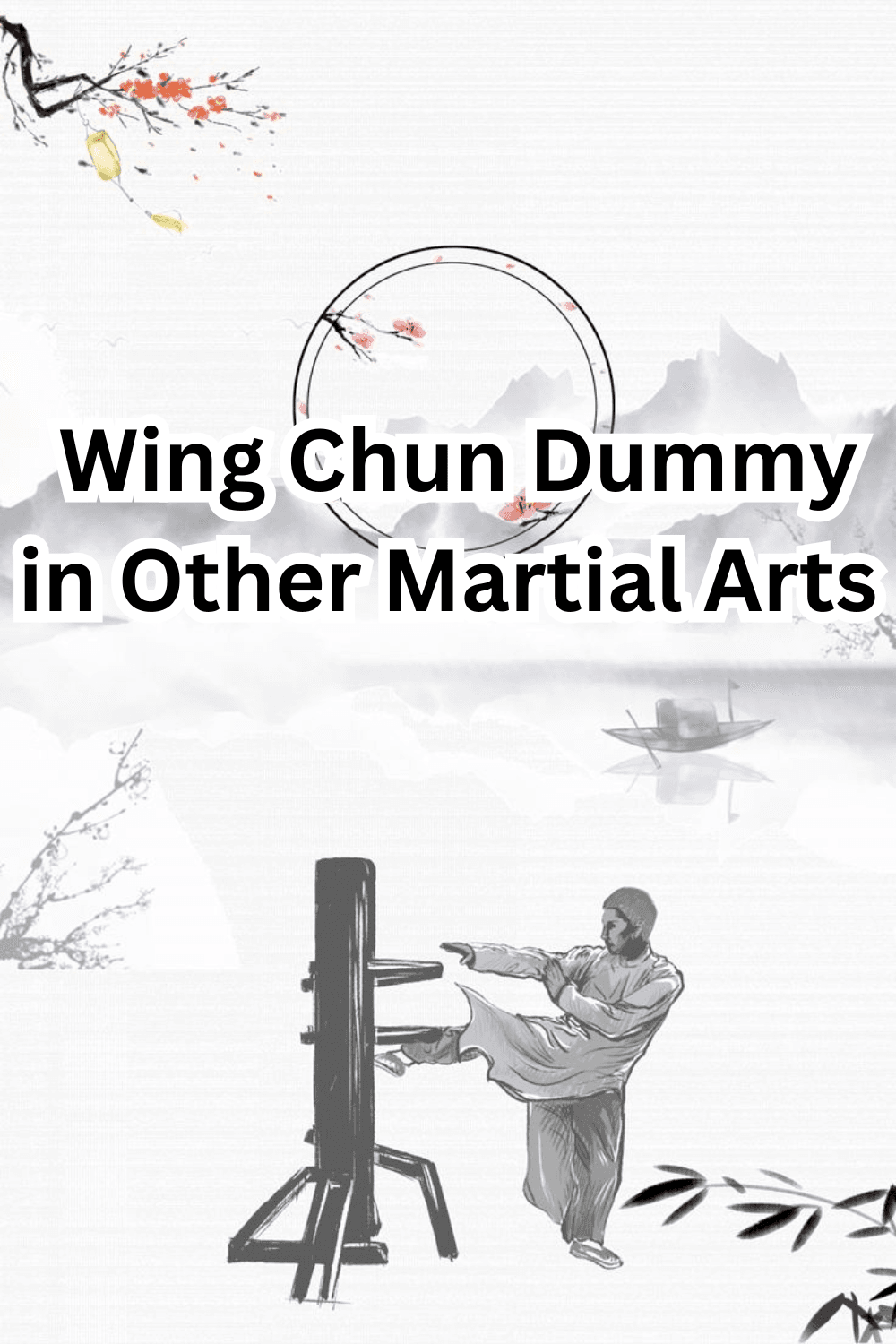Wing Chun is a traditional Chinese martial art that has garnered respect and recognition for its unique approach to self-defense.
Rooted in the principles of efficiency and directness.
Wing Chun focuses on delivering quick, decisive actions that neutralize threats with minimal effort.
This martial art is distinct from many others in that it does not prioritize blocking attacks.
Instead, Wing Chun emphasizes simultaneous defense and offense, seeking to disrupt the opponent’s intention and maintain continuous forward pressure.
The philosophy of Wing Chun is deeply intertwined with its techniques.
Practitioners are taught to use the shortest and most direct path to their target, which is often referred to as the “centerline theory.”
By targeting the opponent’s centerline, a practitioner can effectively control and destabilize them.
This approach minimizes wasted movement and energy, allowing for a more efficient and powerful response to aggression.
Another core principle of Wing Chun is sensitivity, which is developed through specific training drills such as Chi Sau (sticking hands).
Sensitivity training enables practitioners to feel and respond to their opponent’s movements and intentions almost instinctively.
This heightened awareness allows for immediate counteractions that blend seamlessly with the opponent’s force.
Further removing the need for traditional blocking techniques.
Wing Chun’s strategic focus on directness and efficiency is also reflected in its training methodology.
Students are encouraged to develop a relaxed but focused state of mind, which is essential for executing techniques with precision and speed.
The art’s minimalist approach means that every movement serves a purpose, and there is little room for superfluous actions such as blocking, which can be seen as both reactive and inefficient.
Understanding these foundational principles of Wing Chun provides insight into why blocking attacks is not a prominent feature of this martial art.
The focus on direct engagement, sensitivity, and continuous pressure offers a pragmatic and effective means of self-defense that distinguishes Wing Chun from other martial arts.
This philosophy not only shapes the techniques but also the mindset of its practitioners, fostering a unique and refined approach to combat.
Let’s have a quick look of Wing Chun Blocking Attacks.
Historical Context
Understanding the historical development of Wing Chun is crucial to comprehending why blocking attacks is not part of its practice.
Wing Chun, a traditional Chinese martial art, originated in Southern China during the Qing Dynasty.
It is believed to have been developed by a Buddhist nun named Ng Mui, who sought to create an efficient and effective combat system that could be used by individuals regardless of their size or strength.
Wing Chun’s evolution over time has been influenced by various factors, including the socio-political environment and the needs of its practitioners.
The primary objective of Wing Chun was to provide a practical self-defense system that could be utilized in close-quarters combat.
This focus on practicality and efficiency led to the development of techniques that prioritize direct, economical movements over elaborate and energy-consuming maneuvers.
In traditional Wing Chun practice, the emphasis is placed on simultaneous attack and defense rather than blocking.
Blocking is seen as a reactive and defensive approach, which may not always be effective in high-stress combat situations.
Instead, Wing Chun techniques are designed to intercept and neutralize an opponent’s attack while delivering a counter-strike.
This approach not only conserves energy but also maintains continuous forward pressure, which is a key principle of Wing Chun.
The historical context of Wing Chun highlights its practical roots and the necessity for techniques that are both effective and efficient.
By understanding the origins and evolution of Wing Chun, it becomes clear why blocking attacks is not a central component of its practice.
The focus on direct and simultaneous actions ensures that practitioners can respond quickly and effectively to real-world combat scenarios, reflecting the art’s foundational principles and objectives.
Principles of Economy of Motion
One of the foundational principles of Wing Chun is the economy of motion, which emphasizes the efficient use of energy and movement during combat.
This principle advocates for minimizing unnecessary actions to maintain fluidity and conserve energy.
In Wing Chun, every movement is designed to be as direct and efficient as possible, eliminating superfluous steps that might otherwise compromise effectiveness.
The principle of economy of motion is a key reason why blocking is not encouraged in Wing Chun.

Traditional blocking techniques, seen in other martial arts, often involve intercepting and halting an opponent’s attack with a limb, which can disrupt the flow of movement and waste precious energy.
Instead of blocking, Wing Chun practitioners focus on simultaneously defending and attacking, seamlessly transitioning between movements.
This approach aligns with the principle of economy of motion, ensuring that each action serves multiple purposes.
By avoiding the act of blocking, Wing Chun practitioners can maintain continuous forward pressure, a concept known as “forward intent.”
This strategy allows them to close the distance between themselves and their opponent quickly, reducing the opponent’s ability to launch further attacks.
The continuous forward motion not only conserves energy but also capitalizes on the opponent’s openings, making the defense and offense indistinguishable.
Moreover, the economy of motion principle encourages the use of techniques such as deflections and redirections rather than outright blocks.
These techniques utilize the opponent’s force against them, requiring less energy and maintaining the practitioner’s momentum.
This efficient use of force ensures that movements remain fluid and dynamic, adhering to the core tenets of Wing Chun.
In conclusion, the principle of economy of motion is central to the Wing Chun philosophy.
By avoiding blocking and instead focusing on efficient, seamless movements, practitioners can maintain their energy, fluidity, and effectiveness in combat situations.
The Concept of Simultaneous Attack and Defense
Wing Chun, a renowned martial art originating from Southern China, emphasizes the principle of simultaneous attack and defense.
This concept is deeply embed in its techniques and philosophy, setting it apart from other martial arts that often prioritize blocking before counter-attacking.
Wing Chun practitioners are train to merge their defensive and offensive actions into a single, fluid motion.
This approach not only maximizes efficiency but also minimizes the risk of leaving oneself vulnerable during transitions.
The theory behind simultaneous attack and defense has roots in the idea of economy of motion.
By integrating defense with an attack, a practitioner reduces the time and energy spent on separate movements.
This seamless blend allows for a quicker response to an opponent’s actions, positioning the practitioner to maintain the upper hand in a confrontation.
Techniques such as the “tan sau” (palm up block) coupled with a strike or the “bong sau” (wing arm block) followed by a punch exemplify this dual-purpose strategy.

Moreover, the concept of simultaneous attack and defense aligns with the central Wing Chun principle of directness.
Rather than taking a circuitous route by first blocking and then attacking, the practitioner responds directly to the opponent’s threat with a countermeasure that serves both as a defense and an offense.
This direct approach is not only faster but also more unpredictable, catching opponents off-guard and disrupting their rhythm.
Another key aspect is the mental discipline that simultaneous attack and defense cultivates.
Practitioners must develop acute awareness and reflexes to execute these techniques effectively.
This heightened state of readiness ensures that they can respond instinctively and appropriately to any threat, maintaining control over the engagement.
The effectiveness of this concept is demonstrate in various real-world scenarios, underscoring its practicality and relevance in self-defense.
In conclusion, the principle of simultaneous attack and defense is a cornerstone of Wing Chun, reflecting its emphasis on efficiency, directness, and adaptability.
By mastering this concept, practitioners can achieve a higher level of proficiency and effectiveness, making Wing Chun a formidable martial art.
Chi Sao (Sticky Hands) Training
Chi Sao, or Sticky Hands, is a hallmark of Wing Chun training, central to the development of a practitioner’s sensitivity and reflexes.
Unlike many martial arts that focus on blocking and striking, Chi Sao emphasizes the subtler, more fluid aspects of combat.
Through this training method, practitioners learn to feel their opponent’s energy and intentions, allowing them to respond in a more adaptive and efficient manner.
The foundation of Chi Sao lies in maintaining continuous contact with an opponent’s arms, fostering an acute sense of touch and awareness.
This tactile feedback enables practitioners to detect the slightest shifts in pressure and direction, essential for effective redirection of attacks.
Instead of meeting force with force, Chi Sao teaches the practitioner to blend with the opponent’s movements, using their energy against them.
This training method is instrumental in illustrating why blocking is not a preferred tactic in Wing Chun.

Blocking an attack often results in a rigid and static response, which can lead to missed opportunities for counter-attacks and increased vulnerability.
Chi Sao, on the other hand, promotes a dynamic and fluid approach, allowing practitioners to neutralize threats while maintaining positional advantage and readiness for subsequent actions.
Moreover, Chi Sao cultivates a heightened state of readiness and adaptability.
By engaging in this practice, Wing Chun practitioners develop an instinctual ability to react to attacks in real-time, seamlessly transitioning between offense and defense.
This continuous flow is vital for maintaining control in a confrontation.
Ensuring that the practitioner can manage the situation without resorting to brute strength or rigid blocks.
In essence, Chi Sao is not merely a training exercise but a philosophical cornerstone of Wing Chun.
Embodying the art’s principles of efficiency, economy of motion, and harmonious interaction.
Through diligent practice of Chi Sao, Wing Chun practitioners internalize these principles.
Enhancing their martial prowess and understanding of redirecting rather than blocking attacks.
Redirection and Deflection Techniques
In Wing Chun, the emphasis is place on redirection and deflection rather than traditional blocking methods.
This approach has deep root in the fundamental principles of the martial art, which prioritize efficiency.
Economy of motion, and the strategic use of an opponent’s force against them.
The goal is not to meet force with force but to guide the attack away from its intended target.
Thereby neutralizing its impact.
One of the key techniques in Wing Chun is the “Tan Sau” or “Palm Up Hand.”
This technique involves extending the arm with the palm facing upwards to deflect an incoming strike.
By maintaining a relaxed yet structured arm, the practitioner can easily redirect the attacker’s energy off its intended path.
This method not only conserves the practitioner’s energy but also positions them advantageously for a counter-attack.
Another crucial technique is the “Bong Sau” or “Wing Arm.”
This maneuver involves raising the elbow and turning the forearm to intercept and deflect an attack.
The “Bong Sau” is highly effective in situations where the practitioner needs to handle high or mid-level strikes.
Its fluid motion allows for seamless transitions into other techniques, maintaining the flow and rhythm of the engagement.
The “Pak Sau” or “Slap Hand” is also prominently used in Wing Chun.
This technique involves a quick, sharp movement to slap and deflect the opponent’s attack.
Rather than absorbing the force, the “Pak Sau” redirects it, creating an opening for the practitioner to exploit.
This method is particularly effective in close-range combat.
Where speed and precision are paramount.
Additionally, Wing Chun practitioners often employ the “Lop Sau” or “Grabbing Hand.”
This technique focuses on pulling and redirecting the opponent’s arm.
Destabilizing their balance and rendering their attack ineffective.
By controlling the opponent’s limb, the practitioner can manipulate their movements.
Leading to a more advantageous position.
These redirection and deflection techniques are integral to Wing Chun’s philosophy of using minimal effort for maximum effect.
They represent the art’s strategic approach to combat, emphasizing control, precision.
And the intelligent use of an opponent’s energy.
Throu
gh these methods, Wing Chun practitioners can effectively neutralize attacks without the need for rel=”noopener”>traditional blocking.
Staying true to the core principles of the martial art.
Practical Advantages in Combat
In real-life combat scenarios.
Wing Chun practitioners benefit significantly from the strategic choice of not blocking attacks.
One of the most notable advantages is the principle of maintaining forward pressure.
By continuously advancing towards the opponent.
Wing Chun fighters limit their adversary’s ability to regroup or launch effective counter-attacks.
This relentless forward momentum disrupts the opponent’s balance and timing.
Creating opportunities to land strikes while preventing the opponent from executing their own techniques efficiently.
Another critical advantage is the minimization of openings for counter-attacks.
Traditional blocking methods often involve committing one or both hands to intercept an incoming strike.
Which can inadvertently create vulnerabilities.
In contrast, Wing Chun emphasizes deflecting and redirecting attacks while simultaneously striking.
This approach ensures that the practitioner remains protect while maintaining an offensive posture.
By using techniques such as the simultaneous block and strike.
Wing Chun fighters can neutralize the threat and counter-attack in one fluid motion, minimizing the risk of leaving themselves expose.
Energy conservation is also a key benefit of not blocking in Wing Chun.
Blocking can be physically demanding and may lead to fatigue over time.
Especially against a relentless opponent.
Wing Chun’s techniques are design to be efficient and direct.
Requiring less energy to execute while maximizing impact.
By utilizing principles such as economy of motion and structure.
Practitioners can maintain their stamina and effectiveness throughout the duration of a confrontation.
This energy-efficient approach allows them to sustain their defensive and offensive capabilities without unnecessary exertion.
In essence, the practical advantages of not blocking in Wing Chun offer a strategic edge in combat.
By maintaining forward pressure, minimizing openings for counter-attacks.
And conserving energy, practitioners can enhance their effectiveness and resilience in real-life confrontations.
This methodology not only aligns with the core principles of Wing Chun but also provides a robust framework for dealing with the dynamic and unpredictable nature of combat.
Conclusion
In the intricate world of martial arts.
Wing Chun stands out due to its distinctive approach that eschews traditional blocking techniques.
This deviation is not arbitrary but stems from a deep-rooted philosophy emphasizing efficiency, directness.
And the seamless integration of attack and defense.
Practitioners can better appreciate the profound principles that guide this martial art.
One of the core tenets of Wing Chun is its focus on efficiency.
Blocking, in the traditional sense, often requires a separate.
Reactive motion that can be time-consuming and energy-draining.
Instead, Wing Chun advocates for simultaneous attack and defense.
A strategy that neutralizes threats while maintaining forward momentum.
This principle is evident in techniques such as the “Tan Sau” and “Pak Sau,”.
Which combine deflection and counterattack in a single fluid motion.
Directness is another cornerstone of Wing Chun.
The martial art prioritizes straightforward, economical movements design to end confrontations swiftly and decisively.
Traditional blocking can disrupt this flow, adding unnecessary complexity and potential vulnerability to the practitioner’s response.
By eliminating blocking, Wing Chun practitioners are encourage to maintain a direct line of attack.
Ensuring that every movement serves a purpose without deviation.
Moreover, Wing Chun’s emphasis on simultaneous attack and defense.
It creates a unique dynamic that sets it apart from other martial arts.
This approach not only conserves energy but also maximizes the effectiveness of each technique.
By training to respond to threats with both offensive and defensive actions.
Practitioners develop a more holistic and adaptable skill set.
Ultimately, embracing Wing Chun’s philosophy requires a shift in mindset.
It calls for a departure from conventional methods and an acceptance of its unique principles.
By doing so, practitioners can truly embody the spirit of Wing Chun.
Mastering a martial art that is as efficient and direct as it is profound.
This understanding fosters a deeper appreciation for the discipline and its enduring relevance in the world of martial arts.
Let’s us know about your thoughts on Wing Chun Blocking Attacks.



